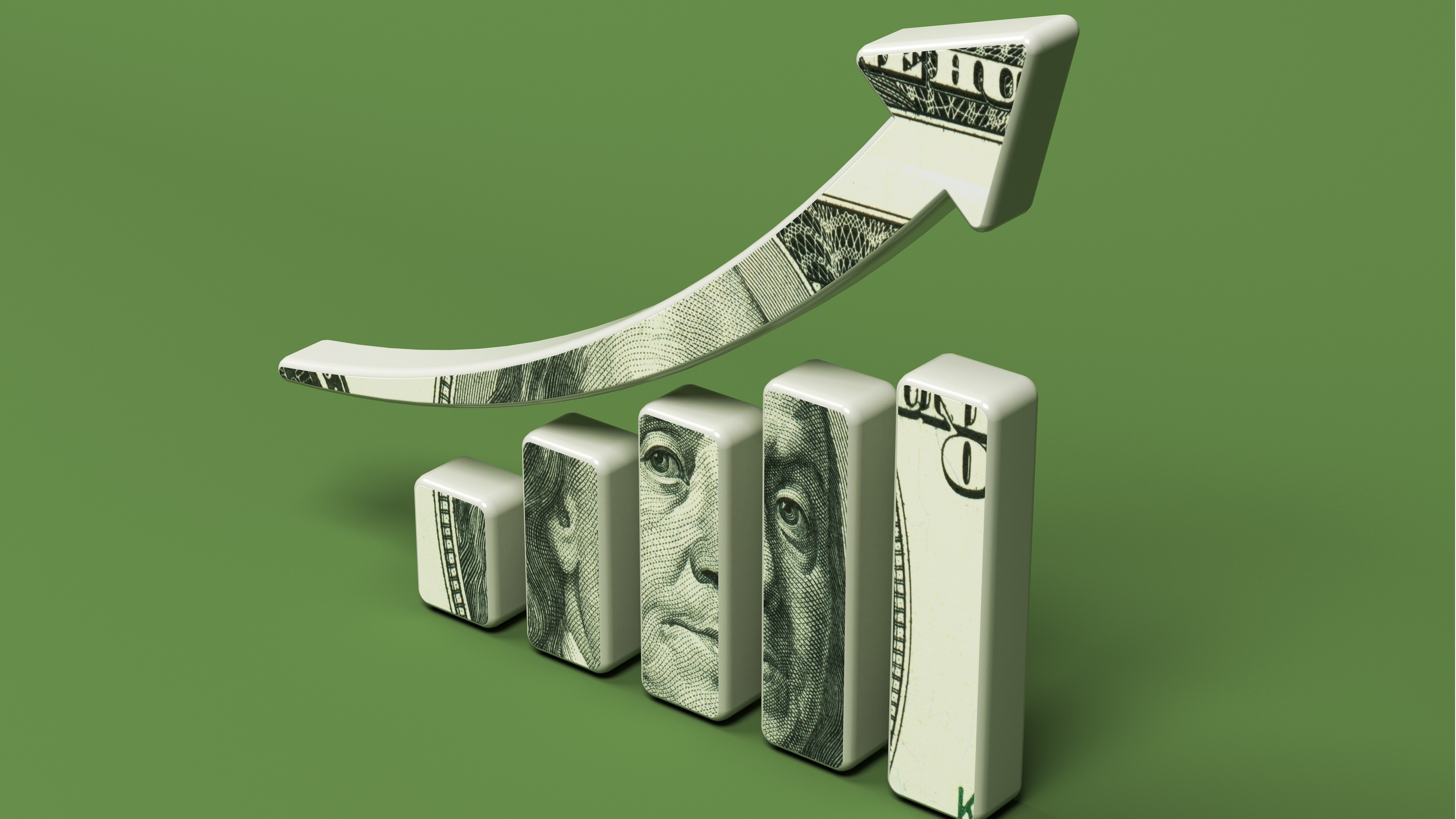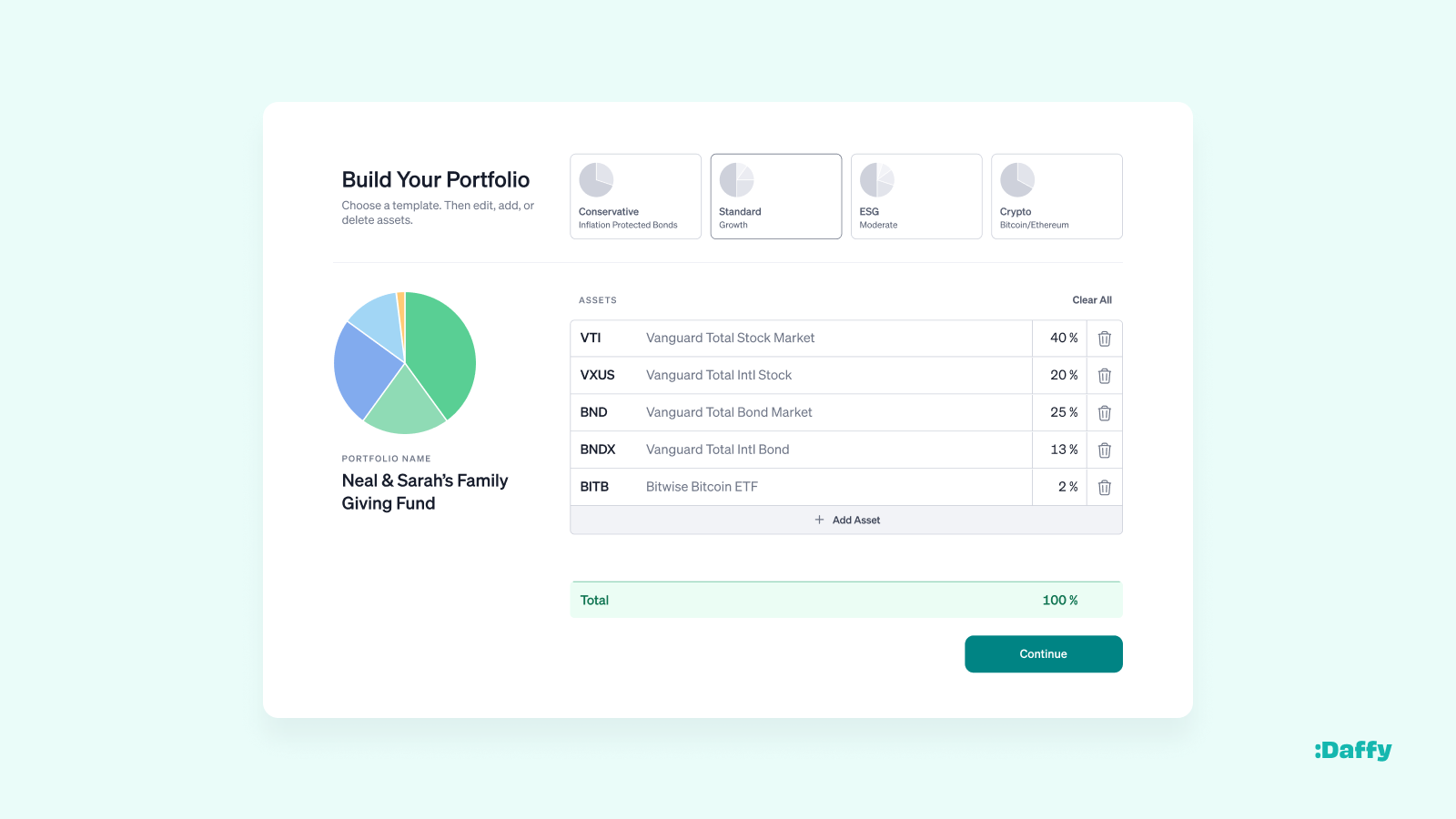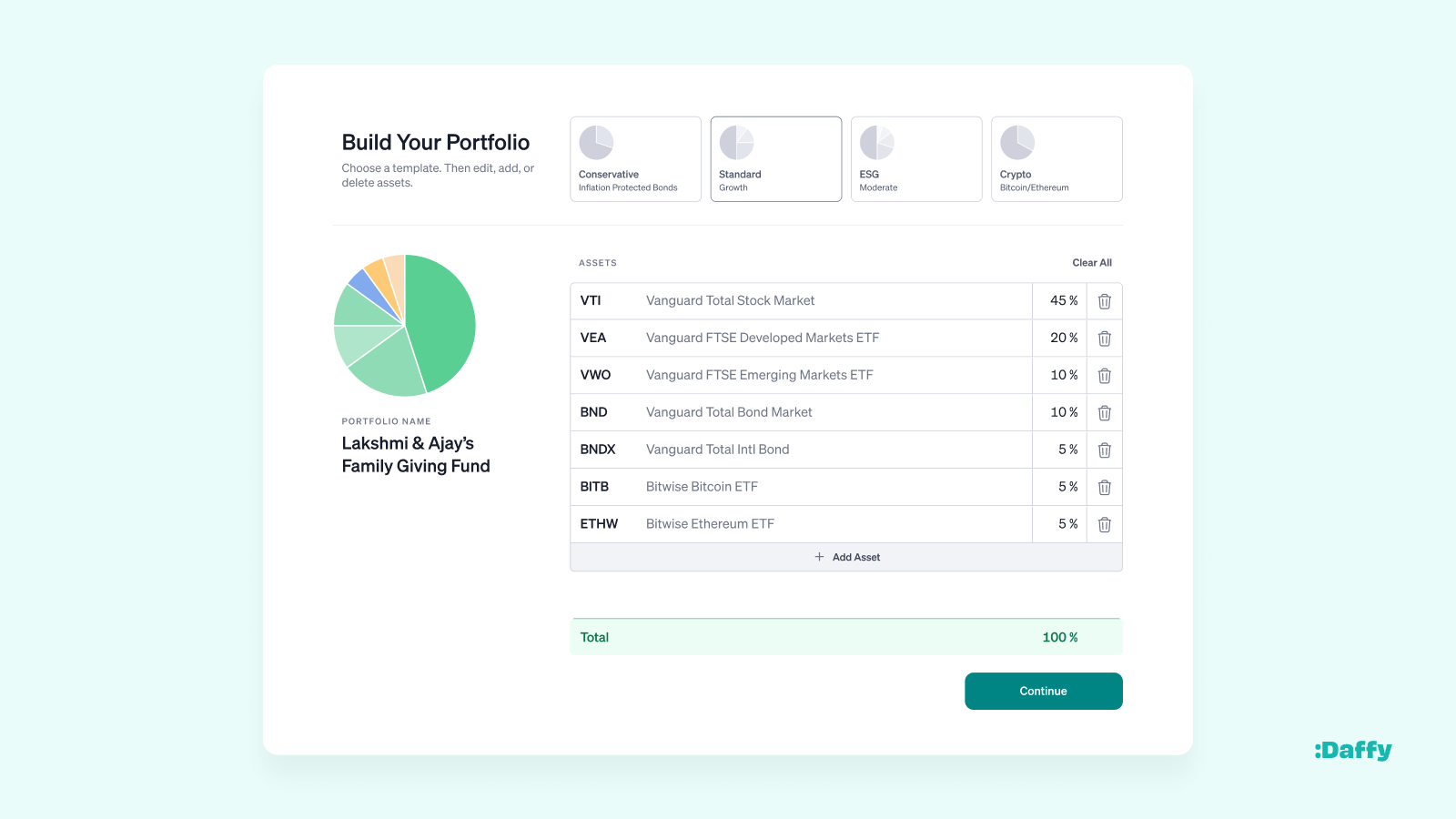
Donor-advised funds (DAFs) are one of the fastest-growing forms of philanthropy in the United States, with over $52 billion granted to charities in 2023.
One of the many benefits of a DAF is the potential for charitable dollars to grow tax-free, which can have a tremendous impact. For example, Daffy members set aside over $105 million for charity last year, and since then, their accounts have grown by over $30 million — an incredible amount raised for charity.
Unfortunately, there is little guidance on developing an investment strategy for a DAF, which is distinctly different from selecting investments for a retirement account. In a retirement account, the primary factors driving investment decisions are typically time horizon and risk tolerance. There’s often a singular goal: building a large enough nest egg to last through retirement.
From just $107.88 $24.99 for Kiplinger Personal Finance
Become a smarter, better informed investor. Subscribe from just $107.88 $24.99, plus get up to 4 Special Issues

Sign up for Kiplinger’s Free Newsletters
Profit and prosper with the best of expert advice on investing, taxes, retirement, personal finance and more - straight to your e-mail.
Profit and prosper with the best of expert advice - straight to your e-mail.
In contrast, the goals for a DAF can vary widely. Some donors contribute regularly, matching their annual giving with weekly or monthly deposits. Others contribute opportunistically, overfunding their accounts in profitable years to support giving in leaner times. Additionally, some donors aim to create a long-term fund that supports annual donations to specific charities for decades, or even indefinitely, like an endowment.
As a result, designing the right portfolio for a DAF requires understanding the giving strategy of the donor.
How to match your investment strategy to your giving goals
Let’s explore a few scenarios to demonstrate different strategies donors might use when investing through their DAF.
A pay-as-you-go plan. Let’s imagine a client named Leah. Leah uses her DAF to donate about $5,000 annually to her child’s school, alongside a few other local and national charities. She contributed $2,000 up front to prepare for an upcoming school fundraiser and established recurring monthly contributions of $300 to support her ongoing giving.
Since Leah plans to distribute most of her contributions this year, she would likely benefit from a conservative portfolio allocated to short-term Treasury bills.
A growth plan. Now consider Neal and Sarah. The couple’s income is fairly stable most years, but Neal’s company went public this year, resulting in a substantial stock-based windfall. They usually donate around $10,000 a year, but they decided to contribute $100,000 this year to their DAF to help manage their increased tax burden from Neal’s stock sales. As a result, most of the funds in their portfolio will be invested for five years or more.
For this couple, a low-cost, globally diversified portfolio of stock and bond funds makes sense. They might even include a small allocation to bitcoin. With a tax-free, automatically rebalanced portfolio in a DAF, their portfolio runs little risk of becoming overweight with high-risk assets.

An endowment plan. Finally, meet Lakshmi and Ajay, who have both had successful careers and wish to create a lasting family legacy through their DAF. They have funded their DAF with over $750,000 in low-cost-basis mutual fund shares that they have held for over 20 years, avoiding any capital gains taxes on those investments. They plan to donate $25,000 annually for the next 20 years, with the intent that their children, Justine and Janan, will eventually succeed in managing the fund.
Given their long-term outlook, an aggressive diversified portfolio with growth-focused investments may be ideal, ensuring that their philanthropic efforts can endure for generations.

The impact of a thoughtful DAF investment strategy
The beauty of a DAF is that it offers the flexibility to adapt your investment strategy to your giving goals, no matter how short term or long term they may be. While not all donor-advised platforms in the U.S. offer clients and advisers the flexibility to customize their portfolio, some, like Daffy, give you the flexibility to select from hundreds of high-quality, low-cost ETFs to fit your giving strategy. (Full disclosure: I am a co-founder and the CEO of Daffy.)
For the 50 million to 60 million U.S. households that give to charity every year, giving is not just a one-off transaction. For many households, it is one of the most important financial goals for their family and their legacy.
So whether you’re looking to fund immediate charitable contributions, leverage market opportunities to maximize future donations or create a legacy that will benefit generations to come, matching your DAF portfolio to your giving strategy is key to making a lasting impact.
The information provided is for educational purposes only and should not be considered investment advice or recommendations, does not constitute a solicitation to buy or sell securities, and should not be considered specific legal investment or tax advice. To assess your specific situation, please consult with a tax and/or investment professional.
Related Content
- Donor-Advised Funds: A Tax-Savvy Way to Rebalance Your Portfolio
- If You Give to Charity, ‘Bunching’ Could Save You Thousands
- Which Type of Donor-Advised Fund Is Right for You?
- Should a Donor-Advised Fund Be Part of Your Estate Plan?
- A Donor-Advised Fund Can Give Your Charitable Giving a Boost
Profit and prosper with the best of Kiplinger's advice on investing, taxes, retirement, personal finance and much more. Delivered daily. Enter your email in the box and click Sign Me Up.

Adam Nash is the co-founder & CEO of Daffy.org, the Donor-Advised Fund for You™, an innovative, fast-growing platform for charitable giving. With no minimum to get started, industry-low fees and ground-breaking technology, Daffy brings the donor-advised fund back to its original goal of helping people be more generous, more often. Adam has served as an executive, angel investor and adviser to some of the most successful technology companies to come out of Silicon Valley. He is currently on the Board of Directors for Acorns, the country’s fastest-growing financial wellness system, and Shift Technologies.
-
 How to Avoid the Financial Quicksand of Early Retirement Losses
How to Avoid the Financial Quicksand of Early Retirement LossesSequence of returns — experiencing losses early on — can quickly deplete your savings, highlighting the need for strategies that prioritize income stability.
-
 How an Elder Law Attorney Can Help Protect Your Aging Parents
How an Elder Law Attorney Can Help Protect Your Aging ParentsIf you are worried about older family members or friends whose financial judgment is raising red flags, help is out there — from an elder law attorney.
-
 Q4 Post-Mortem From an Investment Adviser: Year of Resilience
Q4 Post-Mortem From an Investment Adviser: Year of ResilienceFinancial pro Prem Patel shares his take on how markets performed in the fourth quarter of 2025, with an eye toward what investors should keep in mind for 2026.
-
 This Is How Early Retirement Losses Can Dump You Into Financial Quicksand (Plus, Tips to Stay on Solid Ground)
This Is How Early Retirement Losses Can Dump You Into Financial Quicksand (Plus, Tips to Stay on Solid Ground)Sequence of returns — experiencing losses early on — can quickly deplete your savings, highlighting the need for strategies that prioritize income stability.
-
 How an Elder Law Attorney Can Help Protect Your Aging Parents From Financial Mistakes
How an Elder Law Attorney Can Help Protect Your Aging Parents From Financial MistakesIf you are worried about older family members or friends whose financial judgment is raising red flags, help is out there — from an elder law attorney.
-
 Q4 2025 Post-Mortem From an Investment Adviser: A Year of Resilience as Gold Shines and the U.S. Dollar Dives
Q4 2025 Post-Mortem From an Investment Adviser: A Year of Resilience as Gold Shines and the U.S. Dollar DivesFinancial pro Prem Patel shares his take on how markets performed in the fourth quarter of 2025, with an eye toward what investors should keep in mind for 2026.
-
 'Donroe Doctrine' Pumps Dow 594 Points: Stock Market Today
'Donroe Doctrine' Pumps Dow 594 Points: Stock Market TodayThe S&P 500 rallied but failed to turn the "Santa Claus Rally" indicator positive for 2026.
-
 Is Your Emergency Fund Running Low? Here's How to Bulk It Back Up
Is Your Emergency Fund Running Low? Here's How to Bulk It Back UpIf you're struggling right now, you're not alone. Here's how you can identify financial issues, implement a budget and prioritize rebuilding your emergency fund.
-
 An Expert Guide to How All-Assets Planning Offers a Better Retirement
An Expert Guide to How All-Assets Planning Offers a Better RetirementAn "all-asset" strategy would integrate housing wealth and annuities with traditional investments to generate more income and liquid savings for retirees.
-
 Forget FIRE: Why ‘FILE’ Is the Smarter Move for Child-Free DINKs
Forget FIRE: Why ‘FILE’ Is the Smarter Move for Child-Free DINKsHow shifting from "Retiring Early" to "Living Early" allows child-free adults to enjoy their wealth while they’re still young enough to use it.
-
 7 Tax Blunders to Avoid in Your First Year of Retirement, From a Seasoned Financial Planner
7 Tax Blunders to Avoid in Your First Year of Retirement, From a Seasoned Financial PlannerA business-as-usual approach to taxes in the first year of retirement can lead to silly trip-ups that erode your nest egg. Here are seven common goofs to avoid.
